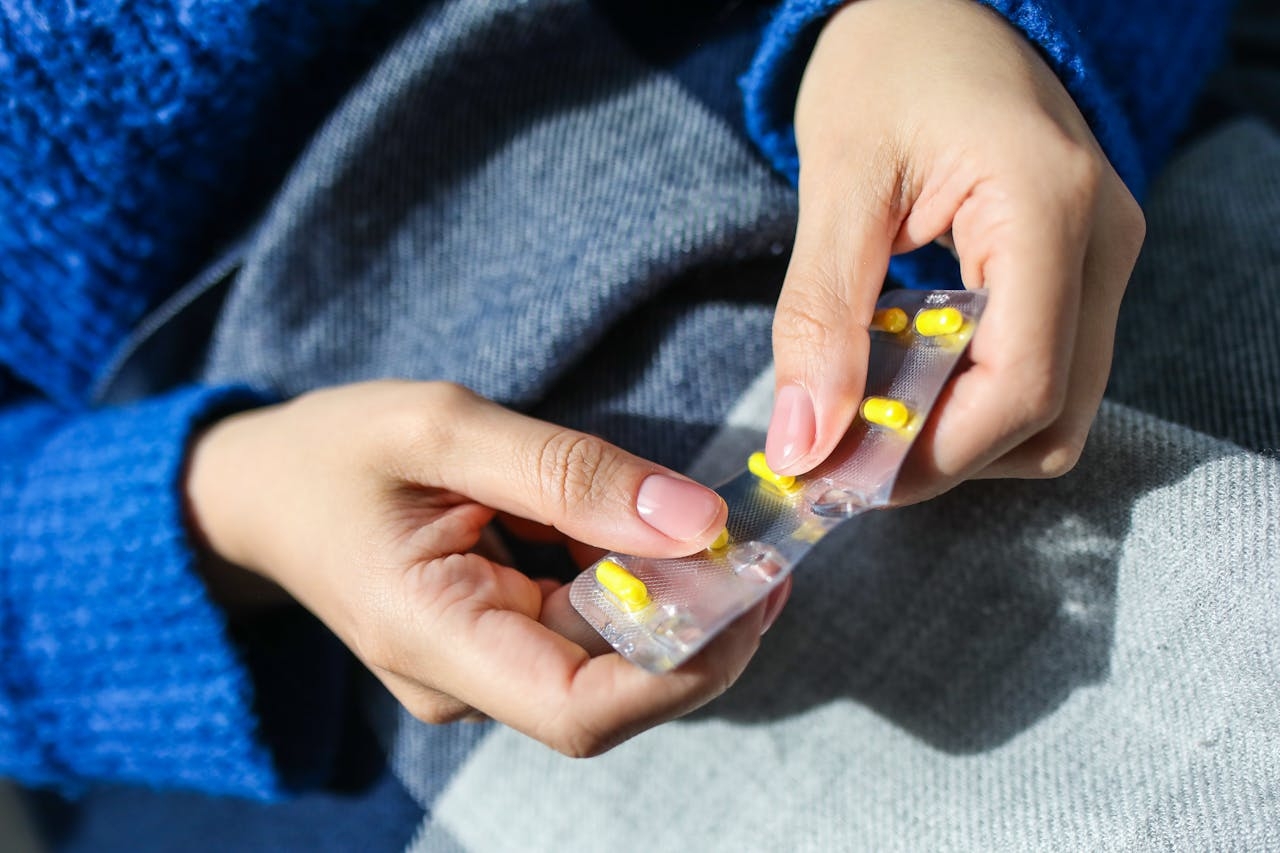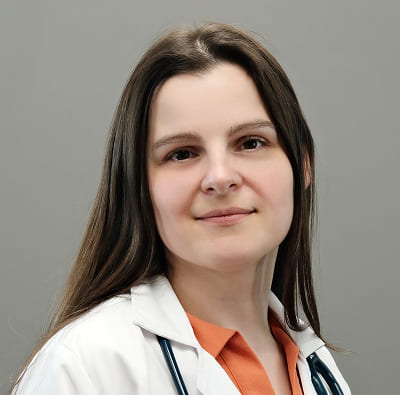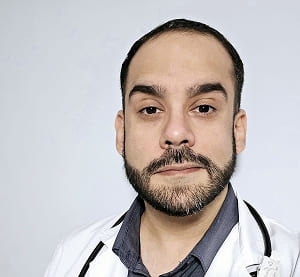
Rivastigmina teva 9,5 mg/24 h parches transdermicos efg

Como usar Rivastigmina teva 9,5 mg/24 h parches transdermicos efg
Introduction
Prospect: information for the user
Rivastigmina Teva 4.6 mg/24 h transdermal patches EFG
Rivastigmina Teva 9.5 mg/24 h transdermal patches EFG
Rivastigmina Teva 13.3 mg/24 h transdermal patches EFG
Read this prospect carefully before starting to use this medicine, as it contains important information for you.
- Keep this prospect, as you may need to read it again.
- If you have any doubts, consult your doctor, pharmacist, or nurse.
- This medicine has been prescribed only to you, and you should not give it to other people even if they have the same symptoms as you, as it may harm them.
- If you experience any adverse effects, consult your doctor, pharmacist, or nurse, even if they do not appear in this prospect. See section 4.
1. What isRivastigmina Tevaand for what it is used
2. What you need to know before starting to useRivastigmina Teva
3. How to useRivastigmina Teva
4. Possible adverse effects
5. Storage ofRivastigmina Teva
6. Contents of the package and additional information
1. What is Rivastigmina Teva and what is it used for
The active ingredient ofRivastigmina Tevais rivastigmina.
Rivastigmina belongs to a class of medications called cholinesterase inhibitors. In patients with Alzheimer's disease, certain nerve cells die in the brain, resulting in low levels of acetylcholine neurotransmitters (a substance that allows nerve cells to communicate with each other).Rivastigmina acts by blocking the enzymes that break down acetylcholine: acetylcholinesterase and butyrylcholinesterase. By blocking these enzymes,rivastigminapermits an increase in acetylcholine in the brain, helping to reduce the symptoms of Alzheimer's disease.
Rivastigmina is used for the treatment of adult patients with mild to moderately severe Alzheimer's disease, a progressive brain disorder that gradually affects memory, intellectual capacity, and behavior.
2. What you need to know before starting to use Rivastigmina Teva
Do not use Rivastigmina Teva
- If you are allergic to rivastigmina (the active ingredient in Rivastigmina Teva) or to any of the other components of this medication (listed in section 6),
- If you have ever had an allergic reaction to a similar medication (carbamate derivatives),
- If you have a skin reaction that extends beyond the size of the patch, if there is a more intense local reaction (such as blisters, increasing skin inflammation, swelling) and if there is no improvement within 48 hours after removing the transdermal patch.
If you find yourself in any of these situations, inform your doctor and do not use Rivastigmina Teva transdermal patches.
Warnings and precautions
Consult your doctor before starting to use Rivastigmina Teva
- If you have or have had any heart disease such as irregular or slow heart rhythm, prolonged QTc, family history of prolonged QTc, torsades de pointes or low levels of potassium or magnesium in the blood,
- If you have or have had any active stomach ulcer,
- If you have or have had any difficulty urinating,
- If you have or have had any seizures,
- If you have or have had any severe respiratory disease,
- If you suffer from tremors,
- If you have a low body weight,
- If you have gastrointestinal reactions such as nausea, dizziness and diarrhea. You may become dehydrated (loss of a large amount of fluid) if the nausea or diarrhea is prolonged,
(vomiting) and diarrhea. You may become dehydrated (loss of a large amount of fluid) if the nausea or diarrhea is prolonged,
- if you have liver problems (hepatic insufficiency).
If you find yourself in any of these situations, your doctor may consider the need for closer monitoring while you are being treated.
If you have not used the patches for more than three days, do not apply another one without consulting your doctor first.
Use in children and adolescents
Rivastigmina Tevashould not be used in the pediatric population for the treatment of Alzheimer's disease.
Use of Rivastigmina Teva with other medications
Inform your doctor or pharmacist if you are using, have used recentlyor may need to use anyother medication.
Rivastigmina Teva may interfere with anticholinergic medications some of which are medications used to relieve stomach cramps or spasms (for example; diciclomina), for the treatment of Parkinson's disease(for example; amantadina)or to prevent travel sickness(for example; difenhidramina, escopolamina or meclizina).
Rivastigmina Teva should not be administered at the same time as metoclopramide (a medication used to relieve or prevent nausea and vomiting). Taking the two medications together may cause problems such as stiffness in the limbs and hand tremors.
If you need to undergo surgery while using Rivastigmina Teva transdermal patches, inform your doctor that you are using them, as they may excessively potentiate the effects of some muscle relaxants during anesthesia.
Care should be taken when using Rivastigmina Teva with beta blockers (medications such as atenolol used to treat hypertension, angina and other heart conditions). Taking the two medications together may cause complications such as a decrease in heart rate (bradycardia) that may lead to fainting or loss of consciousness.
Care should be taken when rivastigmina is taken with other medications that may affect your heart rhythm or the electrical system of your heart (prolongation QT).
Pregnancy, breastfeeding and fertility
If you are pregnant or breastfeeding, think you may be pregnant or are planning to become pregnant, consult your doctor or pharmacist before using this medication.
If you are pregnant, it is necessary to evaluate the benefits of using Rivastigmina Teva against the possible adverse effects on the fetus. Rivastigmina Teva should not be used during pregnancy unless it is clearly necessary.
You should not breastfeed during your treatment with Rivastigmina Teva transdermal patches.
Driving and operating machinery
Your doctor will inform you if your condition allows you to drive or use machinery safely. Rivastigmina Teva transdermal patches may cause dizziness and severe confusion. If you feel dizzy or confused, do not drive, use machinery or perform other tasks that require your attention.
3. How to use Rivastigmina Teva
Follow exactly the administration instructions of this medication indicated by your doctor. In case of doubt, consult your doctor, pharmacist or nurse.
IMPORTANT:
- Remove the previous patch before putting on a new one.
- Only one patch per day.
- Do not cut the patch into pieces.
- Press firmly the patch against the skin with the palm of your hand for at least 30 seconds.
How to start treatment
Your doctor will indicate the most suitable dose of rivastigmine transdermal patches for your case.
Normally, treatment starts with rivastigmine 4.6 mg/24 h.
- The recommended daily dose is rivastigmine 9.5 mg/24 h. If this dose is well tolerated, your doctor may consider increasing the dose to 13.3 mg/24 h.
- Only wear one rivastigmine patch at a time and replace the patch with a new one every 24 hours.
Your doctor may adjust the dose during treatment depending on your individual needs.
If you have not used the patches for more than three days, do not put on a new one without consulting your doctor. Treatment with transdermal patches can be restarted at the same dose if treatment is not interrupted for more than three days. Otherwise, your doctor will have you restart your treatment with rivastigmine 4.6 mg/24 h.
Rivastigmine can be used with food, drink and alcohol.
Where to place rivastigmine transdermal patches
Before putting on a patch, make sure the skin is clean, dry and free of hair, powders, oil, moisturizer or lotion that may prevent the patch from sticking well to the skin, without cuts, redness or irritation.
Remove the patch carefully before putting on a new one. Wearing multiple patches on your body may expose you to an excessive amount of this medication, which could be potentially hazardous.
Put on one patch per day in one of the possible areas, as shown in the following diagrams:
- Upper left or upper right arm
- Upper left or upper right chest (avoiding the breasts)
- Upper left or upper right back
- Lower left or lower right back
Every 24 hours, remove the previous patch before putting on a new one in only one of the possible areas.
Front
Ó Ó Ó Ó
Back
Ó Ó Ó
Each time you change the patch, remove the previous day's patch before putting on a new one in a different area of the skin (for example, one day on the right side of the body and the next day on the left side; or one day on the upper body and the next day on the lower body). Wait at least 14 days to put a new patch in the same area of the skin.
How to apply rivastigmine transdermal patches
Rivastigmine patches are thin, transparent plastic and stick to the skin. Each patch is in a sealed pouch that protects it until you put it on. Do not open the pouch or remove the patch until you are ready to put it on.
Remove the existing patch carefully before putting on a new one. Patients starting treatment for the first time and patients restarting treatment with rivastigmine after interrupting treatment should start with the second figure. | ||
Each patch is in an individual protective pouch. Only open the pouch when you are ready to put on the patch. Cut the pouch along the dotted line with scissors and remove the patch from the pouch. | ||
A protective laminate with two sheets covers the adhesive side of the patch. Remove the first sheet without touching the adhesive side of the patch. | ||
Place the adhesive side of the patch on the upper or lower back or on the upper arm or chest and then remove the second sheet of the laminate. | ||
Press firmly the patch against the skin with the palm of your hand for at least 30 seconds and make sure the edges have stuck well. If this helps, you can write on the patch, for example, the day of the week, with a fine-tip pen. |
You must wear the patch continuously until you change it for a new one.
When putting on a new patch, you can try different areas to find the ones that are most comfortable and where your clothing does not rub against the patch.
How to remove Rivastigmina Teva transdermal patches
Gently pull one edge of the patch to slowly remove it from the skin. If there are any remaining adhesive residues on the skin, soak the area with warm water and mild soap or use baby oil to remove it. Do not use alcohol or other solvents (nail polish removers or other solvents).
After removing the patch, wash your hands with soap and water. If you come into contact with your eyes or if your eyes become red after handling the patch, wash immediately with plenty of water and seek medical advice if the symptoms do not resolve.
Can you wear Rivastigmina Teva transdermal patches when bathing, swimming or exposing yourself to the sun?
- Bathing, swimming or showering should not affect the patch. Make sure it does not come off partially while doing these activities.
- Do not expose the patch to an external heat source (e.g. excessive sunlight, sauna, solarium) for long periods of time.
What to do if a patch falls off
If a patch falls off, put on a new one for the rest of the day and change it the next day at the usual time.
When and for how long should you wear Rivastigmina Teva transdermal patches
- To benefit from your treatment, you must put on a new patch every day, preferably at the same time.
- Only wear one rivastigmine patch at a time and replace the patch with a new one every 24 hours.
If you use more Rivastigmina Teva than you should
If you accidentally put on more than one patch, remove all the patches from the skin and inform your doctor, pharmacist or call the Toxicological Information Service, phone 91 562 04 20 (indicating the medication and the amount administered). You may need medical attention. Some people who have taken accidentally high doses of rivastigmine orally have had a feeling of discomfort (nausea), vomiting, diarrhea, high blood pressure and hallucinations. They may also experience a slowing of heart rate and fainting.
If you forget to use Rivastigmina Teva
If you realize you have forgotten to put on a patch, put it on immediately. The next day, put on the next patch at the usual time. Do not put on two patches to compensate for the one you forgot.
If you interrupt treatment with rivastigmina
Inform your doctor or pharmacist if you stop using the patches.
If you have any other doubts about the use of this product, ask your doctor or pharmacist.
4. Possible Adverse Effects
Like all medications, Teva Rivastigmina transdermal patches may cause side effects,
although not everyone will experience them.
You may experience side effects more frequently when you start treatment or when your dose
is increased. Generally, side effects will slowly disappear as your body gets used to the medication.
If you notice any of the following serious side effects, remove the patch and immediately inform your doctor.
Common (may affect up to 1 in 10 people)
- Loss of appetite
- Decreased appetite
- Sensation of dizziness
- Sensation of numbness
- Sensation of agitation
- Urinary tract infection (infection in the parts of the body that store or release urine)
- Urinary incontinence (inability to stop urinating properly)
- Stomach problems such as nausea or vomiting, diarrhea, indigestion, and stomach pain
- Anxiety
- Depression
- Headache
- Fainting
- Sensation of fatigue or weakness
- Fever
- Weight loss
- Confusion
- Delirium
- Rash
- Reaction on the skin where the patch was used, such as redness, rash, swelling, inflammation, or skin irritation.
Uncommon (may affect up to 1 in 100 people)
- Problems with your heart rhythm such as slow heart rate
- Stomach ulcer
- Dehydration (excessive fluid loss)
- Hypervigilance (high level of activity, restlessness)
- Aggression
Rare (may affect up to 1 in 1,000 people)
- Falls
Very rare (may affect up to 1 in 10,000 people)
- Tremors, muscle spasms, or movement disorders resulting from effects on a part of the brain that regulates movement
Unknown (frequency cannot be estimated from available data)
- Itching, redness, blisters, inflammation of allergic skin.
- Worsening of Parkinson's disease symptoms, such as tremor, rigidity, and difficulty moving
- Pancreatitis, symptoms include upper abdominal pain,
- often accompanied by nausea or vomiting.
- Fast or irregular heart rate
- Hallucinations (seeing, hearing, or feeling things that do not exist)
- High blood pressure
- Seizures (attacks)
- Tremors
- Drowsiness
- Liver inflammation (yellowing of the skin, yellowing of the white of the eyes, abnormal darkening of urine, or unexplained nausea, vomiting, fatigue, and loss of appetite)
- Changes in liver function tests
- Sensation of restlessness
- Nightmares
- Syndrome of Pisa (a disease that involves involuntary muscle contraction with abnormal flexion of the body and head to one side)
If you notice any of the side effects listed above, remove the patch and immediately inform your doctor.
Other side effects experienced with rivastigmine capsules or oral solution and that may occur with patches:
Common (may affect up to 1 in 10 people)
- General feeling of discomfort
- Feeling of confusion
- Increased sweating
Uncommon (may affect up to 1 in 100 people)
- Difficulty sleeping
Rare (may affect up to 1 in 1,000 people)
- Ulcer in the intestine
- Back, jaw, and chest pain, caused by physical exertion and problems with blood flow to the heart
Very rare (may affect up to 1 in 10,000 people)
- Gastrointestinal bleeding; it manifests as blood in the stool or vomiting blood
- Some people who have been severely nauseated (vomiting) have had a tear in part of the tube that connects their mouth to their stomach (esophagus)
Reporting of side effects
If you experience any type of side effect, consult your doctor, pharmacist, or nurse, even if it is a possible side effect that does not appear in this prospectus. You can also report them directly through the Spanish System for the Pharmacovigilance of Medicines for Human Use: https://www.notificaram.es. By reporting side effects, you can contribute to providing more information on the safety of this medication.
5. Conservation of Rivastigmina Teva
Keepthis medicationout of the sight and reach of children.
Do not usethis medicationafter the expiration date that appears onthe box and the packageafter CAD. The expiration date is the last day of the month indicated.
This medication does not require special temperature conditions.
Keep the transdermal patch inside the package until use.
Do not use any patch if you observe that it is damaged or shows signs of manipulation.
Keep in the original packaging to protect it from light.
After removing a patch, fold it in half with the adhesive side inward and press. After placing it in the original package, make sure it is out of the reach of children. After removing the patch, do not touch your eyes, and wash your hands thoroughly with water and soap. If your household waste is disposed of by incineration, you can throw the patch in your household waste. If not, take the used patches to the pharmacy, preferably in the original packaging.
Medications should not be thrown down the drain or in the trash. Deposit the containers and medications you no longer need at the SIGRE point of the pharmacy. In case of doubtask your pharmacist how to dispose of the containers and medications you no longer need. This way, you will help protect the environment.
6. Contents of the packaging and additional information
Composition of Rivastigmina Teva
The active ingredient is rivastigmina.
Rivastigmina Teva 4,6 mg/24 h transdermal patches EFG
Each patch releases 4.6 mg of rivastigmina in 24 hours, measures 5 cm2and contains 9 mg of rivastigmina.
Rivastigmina Teva 9,5 mg/24 h transdermal patches EFG
Each patch releases 9.5 mg of rivastigmina in 24 hours, measures 10 cm2and contains 18 mg of rivastigmina.
Rivastigmina Teva 13,3 mg/24 h transdermal patches EFG
Each patch releases 13.3 mg of rivastigmina in 24 hours, measures 15 cm2and contains 27 mg of rivastigmina.
The other components are:
Backing: Polyster backing
Polyster backing coated with fluorine
Medicine reservoir: Acrylic adhesive, copolymer of polyacrylate (butylmethacrylate-cometilmethacrylate)
Adhesive matrix: Silicone adhesive
Printing ink: Black printing ink
Appearance of the product and contents of the package
Each transdermal patch, is a thin patch composed of three layers. The outer layer is translucent, white and marked in black with the following:
Rivastigmina Teva 4,6 mg/24 h transdermal patches EFG
“Rivastigmina 4,6 mg/24 h”
Rivastigmina Teva 9,5 mg/24 h transdermal patches EFG
“Rivastigmina 9,5 mg/24 h”
Rivastigmina Teva 13,3 mg/24 h transdermal patches EFG
“Rivastigmina 13,3 mg/24 h”
Each patch is packaged in individual child-resistant blisters, sealed.
Rivastigmina Teva 4,6 mg/24 h transdermal patches EFG
The patches are available in packages containing 7, 10, 30, 60 and 90 blisters and in multi-packages containing 60 (2 x 30) or 90 (3 x 30) blisters.
Rivastigmina Teva 9,5 mg/24 h transdermal patches EFG
The patches are available in packages containing 7, 10, 30, 60 and 90 blisters and in multi-packages containing 60 (2 x 30) and 90 (3 x 30) blisters.
Rivastigmina Teva 13,3 mg/24 h transdermal patches EFG
The patches are available in packages containing 7, 30, 60 and 90 blisters and in multi-packages containing 60 (2 x 30) and 90 (3 x 30) blisters.
Only some package sizes may be marketed.
Marketing authorization holder and responsible manufacturer
Marketing authorization holder
Teva Pharma S.L.U.
C/ Anabel Segura, nº 11 Edificio Albatros B, 1ª planta
28108 Alcobendas – Madrid
Spain
Responsible manufacturer
Eurofins Phast GmbH
Kardinal-Wendel-Strasse 16
66424 Homburg
Germany
Delph-i GmbH
Schöntalweg 7+9
63849 Leidersbach,
Germany
Merckle GmbH
Ludwig-Merckle-Strasse, 3 Blaubeuren D-89143
Germany
Teva Operations Poland SP.Z.O.O.
Ul. Mogilska 80
31-546 Krakow, Poland
This medicinal product is authorized in the Member States of the European Economic Area
with the following names
AustriaRivastigmin ratiopharm 4,6 mg/24 Stunden transdermales Pflaster
Rivastigmin ratiopharm 9,5 mg/24 Stunden transdermales Pflaster
Rivastigmin ratiopharm 13,3 mg/24 Stunden transdermales Pflaster
GermanyRivastigmin-ratiopharm 4,6 mg/24 Stunden transdermales Pflaster
Rivastigmin-ratiopharm 9,5 mg/24 Stunden transdermales Pflaster
Rivastigmin-ratiopharm 13,3 mg/24 Stunden transdermales Pflaster
SpainRivastigmina Teva 4,6 mg/24 h Parche transdérmico EFG
Rivastigmina Teva 9,5 mg/24 h Parche transdérmico EFG
Rivastigmina Teva 13,3 mg/24 h Parche transdérmico EFG
NetherlandsRivastigmine Teva 4,6 mg/24 u, pleister voor transdermaal gebruik
Rivastigmine Teva 9,5 mg/24 u, pleister voor transdermaal gebruik
Rivastigmine Teva 13,3 mg/24 u, pleister voor transdermaal gebruik
PortugalRivastigmina Teva
Rivastigmina Teva
Rivastigmina Teva
SloveniaRivastigmin Teva 4,6 mg/24 h transdermalni obliž
Rivastigmin Teva 9,5 mg/24 h transdermalni obliž
Rivastigmin Teva 13,3 mg/24 h transdermalni obliž
United KingdomErastig13.3 mg/24 h transdermal patch
Last review date of this leaflet: March 2025
Detailed information on this medicinal product is available on the website of the Spanish Agency for Medicines and Medical Devices (AEMPS) http://www.aemps.gob.es/
- País de registo
- Substância ativa
- Requer receita médicaSim
- Fabricante
- Esta informação é apenas para referência e não constitui aconselhamento médico. Consulte sempre um médico antes de tomar qualquer medicamento. A Oladoctor não se responsabiliza por decisões médicas baseadas neste conteúdo.
Consulte um médico online sobre o Rivastigmina teva 9,5 mg/24 h parches transdermicos efg
Consulte um médico online
Tem perguntas sobre este medicamento ou sintomas? Obtenha orientação de um médico qualificado, de forma prática e segura.















